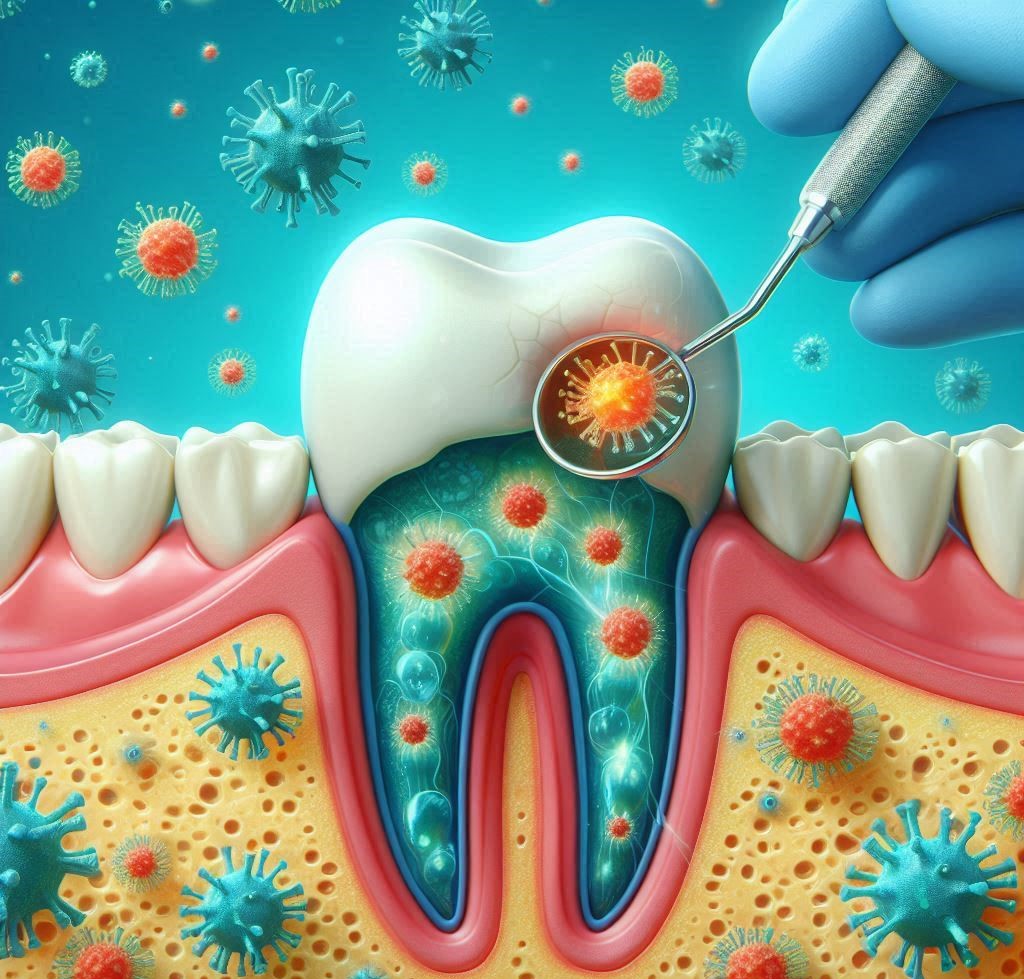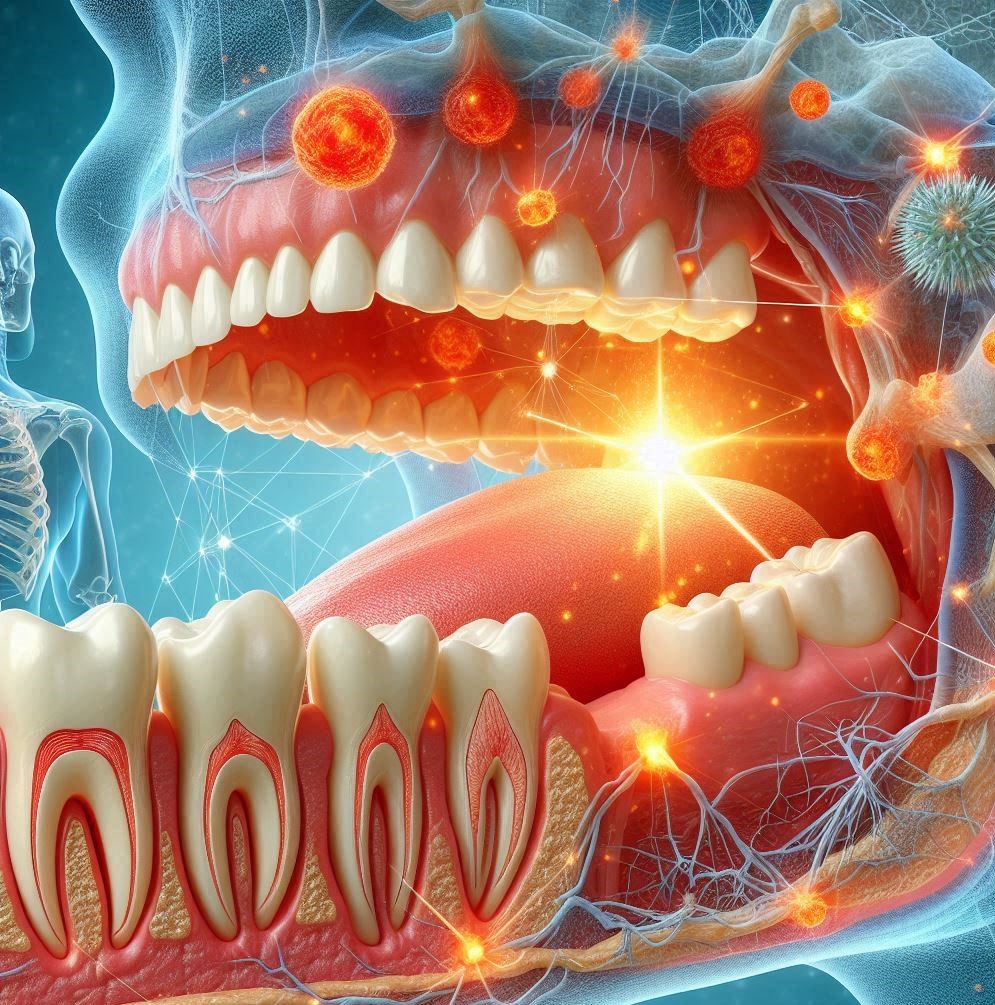Dental fillings are one of the most common dental procedures used today. In essence, fillings are used to treat cavities, which are areas of the tooth that have been decayed by bacterial action. Tooth decay is a progressive process, starting from minor enamel erosion and leading to more severe conditions that can affect the internal structure of the tooth. If left untreated, cavities can lead to tooth loss, infections, abscesses, and more complex procedures such as root canal therapy or extractions.
Dental fillings are not only an effective means of restoring teeth damaged by decay, but they also play a crucial role in preventing the further spread of decay, protecting the structural integrity of the tooth, and promoting the health of surrounding teeth. This comprehensive article will explore the many aspects of dental fillings, their types, how they work to prevent further damage, and why they are essential in modern dental care.
Tooth Decay: A Silent Progression
Before discussing fillings, it’s essential to understand how tooth decay occurs and why it can lead to further complications if untreated.
The Bacterial Cause of Cavities
Tooth decay is primarily caused by the activity of bacteria in the mouth. These bacteria feed on sugars from food and drinks, producing acids that erode tooth enamel over time. The decay process begins with the formation of plaque, a sticky film of bacteria that forms on the teeth. Plaque forms when sugars and starches from food interact with bacteria naturally present in the mouth.
Over time, if plaque isn’t removed through regular brushing and flossing, the acids produced by bacteria start to demineralize the enamel, weakening it and forming microscopic holes. If this process continues, these small holes grow into larger cavities, causing structural damage to the tooth. When the decay reaches deeper layers of the tooth (dentin or pulp), it may lead to pain, infection, and even tooth loss.
The Stages of Tooth Decay
- Initial Demineralization (White Spots): The first stage of decay is the loss of minerals from the tooth enamel, typically due to acid exposure. This can cause a chalky white appearance on the tooth surface.
- Enamel Breakdown (Cavity Formation): As the enamel continues to weaken, it breaks down, creating visible cavities or holes. This is the stage when dental fillings are necessary to restore the tooth.
- Dentin Involvement: If untreated, the decay spreads into the dentin layer beneath the enamel. At this stage, the cavity can cause increased sensitivity and pain, especially when eating or drinking hot or cold foods.
- Pulp Infection: If the cavity continues to progress and reaches the pulp (the inner chamber of the tooth), it can lead to a severe infection. This can result in abscesses, intense pain, and the need for root canal therapy or tooth extraction.
Consequences of Untreated Cavities
If a cavity is left untreated, the decay will continue to spread, deepening into the tooth structure. Eventually, it can affect the tooth’s root, leading to inflammation, infection, and abscess formation. Without treatment, an infected tooth may need a root canal, and in severe cases, extraction becomes necessary.
This is why early intervention with fillings is critical. Fillings halt the progression of decay and prevent the tooth from deteriorating further.
How Dental Fillings Prevent Further Decay
Sealing the Cavity and Preventing Bacterial Spread
The most critical function of dental fillings is to seal the cavity and prevent the spread of bacteria. Once a dentist removes the decayed tissue from a tooth, the cavity is essentially an open space that could invite bacteria to continue to erode the tooth. By placing a filling material inside the cavity, the dentist creates a protective barrier that prevents further bacterial infiltration. This is vital in preventing the decay from progressing deeper into the tooth and causing more damage.
Protecting the Tooth from Mechanical Stress
Teeth endure a significant amount of mechanical stress from chewing, biting, and grinding. A cavity weakens the tooth structure, making it more susceptible to fracture under pressure. The placement of a dental filling restores the strength and integrity of the tooth, enabling it to withstand normal chewing forces. Without a filling, the tooth could break or fracture, leading to the need for more complex and expensive dental treatments, such as crowns or extractions.
Preventing Sensitivity and Pain
Cavities, particularly those that reach the dentin or pulp layers, can cause tooth sensitivity, especially when exposed to hot or cold stimuli. A filling restores the tooth’s structure, preventing exposure to sensitive areas, and thus alleviating pain or discomfort caused by temperature changes, sweet foods, or acidic substances.
Improving Aesthetic Appearance
Fillings can also prevent aesthetic issues that arise when cavities are left untreated. As a cavity grows, it can become visible, leading to cosmetic concerns. When the cavity is filled, especially with tooth-colored materials like composite resin, the aesthetic appearance of the tooth is restored. This is especially important for visible teeth in the front of the mouth.
Preventing Infection and Abscesses
By filling a cavity and sealing it, fillings also prevent further infection of the tooth’s pulp (the innermost part of the tooth). An untreated cavity that progresses to the pulp can lead to an abscess, a painful and potentially serious infection. Fillings act as a barrier to infection, reducing the risk of abscess formation and the need for more invasive treatments such as root canals or tooth extraction.
Types of Dental Fillings and Their Role in Preventing Decay
Over time, various materials have been developed for dental fillings, each with specific properties suited for different types of cavities. Let’s take a closer look at the most common filling materials and their advantages in protecting teeth from further decay.
Amalgam Fillings (Silver Fillings)
Amalgam fillings are one of the oldest and most widely used types of fillings. They are made from a mixture of metals, including silver, mercury, tin, and copper, and are known for their durability and strength.
- Advantages:
- Extremely durable and long-lasting (often 10-15 years or more).
- Ideal for large cavities, particularly in the back teeth, where the pressure from chewing is greatest.
- Cost-effective compared to other materials.
- Disadvantages:
- Silver color, which may be visible in the mouth (not aesthetically ideal for visible teeth).
- Requires more removal of healthy tooth tissue during placement, as it needs a larger cavity preparation.
- Mercury content, although deemed safe by dental associations, can be a concern for some patients.
Amalgam fillings work well in preventing further decay due to their strength and longevity. However, their lack of aesthetic appeal has led many patients to opt for tooth-colored fillings when cavities are in visible areas of the mouth.
Composite Resin Fillings (Tooth-Colored Fillings)
Composite fillings are made from a combination of plastic resins and fine glass particles. These fillings can be color-matched to the natural color of the teeth, making them an excellent choice for cavities in visible areas, such as the front teeth.
- Advantages:
- Aesthetic appeal, blending seamlessly with natural teeth.
- Bonds directly to the tooth structure, helping to strengthen it.
- Ideal for small-to-medium-sized cavities.
- Disadvantages:
- Not as durable as amalgam fillings, especially in areas that endure heavy chewing pressure.
- More expensive than amalgam fillings.
- May stain or discolor over time, especially if exposed to coffee, tea, or smoking.
Composite fillings offer a natural look and help prevent further decay by sealing the cavity effectively. However, they are less durable than amalgam and may need replacement sooner, particularly if used for larger cavities or in areas subject to heavy stress.
Ceramic Fillings (Porcelain Fillings)
Ceramic fillings are made from porcelain and are highly aesthetic, often used for cavities in visible areas of the mouth. These fillings are durable and resistant to staining.
- Advantages:
- Aesthetic appeal, offering a close match to the color and translucency of natural teeth.
- Long-lasting and durable.
- More resistant to staining compared to composite resins.
- Disadvantages:
- More expensive than amalgam and composite fillings.
- Require multiple visits, as they are often fabricated in a dental lab.
- Can be more brittle than amalgam, making them more prone to breaking under certain conditions.
Ceramic fillings are excellent for preventing decay in visible areas while offering superior aesthetics and long-lasting results.
Glass Ionomer Fillings
Glass ionomer fillings are made from a combination of glass particles and an acrylic acid solution. These fillings are unique in that they release fluoride over time, which can help prevent future decay by remineralizing the tooth enamel.
- Advantages:
- Fluoride release helps protect against further decay.
- Suitable for cavities near the gum line.
- Bonds well to the tooth structure.
- Disadvantages:
- Less durable than composite or amalgam fillings.
- More prone to wear and tear over time.
- Not ideal for high-stress areas like molars.
While not as durable as other materials, glass ionomer fillings play an important role in protecting teeth from further decay by releasing fluoride, a mineral that can remineralize enamel and help reverse early stages of tooth decay.
Resilon Fillings
Resilon is a thermoplastic root canal filling material that is becoming popular in some modern dentistry practices. While primarily used for root canal procedures, Resilon has been explored for its potential use in regular cavity fillings due to its sealing capabilities.
- Advantages:
- Flexible and biocompatible.
- Creates a good seal, reducing the risk of reinfection.
- More durable than some other filling materials.
- Disadvantages:
- Relatively new, so long-term data on its effectiveness is still being gathered.
- More expensive than traditional filling materials.
Resilon’s ability to provide a strong seal makes it an effective option in preventing further decay and infection in some cases, although its use as a routine filling material is still developing.
The Filling Procedure: Step-by-Step Process
Diagnosis and Treatment Planning
The first step in getting a filling is a thorough examination by your dentist. If a cavity is detected, the dentist will discuss your options for treatment. Factors like the cavity’s size, location, and the material best suited for your needs will determine the type of filling material used.
Tooth Preparation and Anesthesia
The dentist will begin by numbing the area around the affected tooth to ensure that you don’t feel discomfort during the procedure. Once the area is numb, the dentist will use a dental drill to remove the decayed part of the tooth. This step is crucial for ensuring that all bacteria and decayed tissue are removed to prevent further infection.
Filling Placement
Once the cavity is clean and dry, the dentist will place the selected filling material into the cavity. Depending on the material, the filling may need to be hardened using a special curing light or allowed to harden naturally. The material is then shaped to match the natural contours of the tooth.
Finishing Touches
After the filling material is placed, the dentist will check your bite to ensure it aligns correctly. They will smooth and polish the filling to make it feel comfortable and look natural. Finally, the area is cleaned, and the procedure is complete.
Long-Term Benefits of Fillings
While fillings provide immediate protection against further decay, their long-term benefits are equally important. They help preserve the tooth structure, prevent further infection, restore function, and contribute to overall oral health. Furthermore, fillings can protect teeth from the harmful effects of plaque buildup and bacteria, significantly reducing the risk of additional cavities in the same area.
Post-Treatment Care for Dental Fillings
After a dental filling is placed, proper aftercare is crucial for ensuring the filling’s success, preserving the treated tooth, and preventing further complications. While fillings restore tooth structure and prevent further decay, the patient’s oral hygiene habits and lifestyle choices play an important role in prolonging the lifespan of the filling and maintaining optimal oral health.
Immediate Aftercare
The aftercare immediately following the filling procedure focuses on the area of the mouth that was treated:
- Anesthesia Wear-off: If local anesthesia was used during the procedure, the numbness should wear off within a few hours. Be cautious during this time to avoid accidentally biting your tongue, cheek, or lips.
- Sensitivity: It is normal to experience some sensitivity after a filling, especially when the filling is placed in areas close to the nerve (e.g., near the pulp). This sensitivity can manifest as discomfort when consuming hot or cold food or drinks. This typically subsides within a few days.
- Avoid Chewing Immediately: If the filling was placed in the back teeth, try to avoid chewing on that side of the mouth for at least a couple of hours. Composite resin fillings typically require some time to fully harden, while amalgam fillings may require longer time (up to 24 hours).
Oral Hygiene Following Fillings
Maintaining good oral hygiene is essential to ensuring that the filling does not fail and that the tooth stays healthy:
- Brushing: Continue to brush your teeth twice a day with fluoride toothpaste. Be gentle around the filled area, especially if it feels sensitive. Use a soft-bristled toothbrush to avoid putting excessive pressure on the filling.
- Flossing: Floss daily to remove plaque and food particles from between teeth. Make sure to floss around the filled tooth to prevent plaque buildup along the edges of the filling, which could lead to further decay.
- Mouthwash: Using an antibacterial mouthwash can help kill bacteria and prevent infection in the area around the filling. Avoid mouthwashes with alcohol, as they may cause irritation in sensitive areas.
Dietary Considerations
After receiving a filling, be mindful of the foods you eat, particularly in the first 24-48 hours:
- Avoid Hard or Sticky Foods: Hard candies, ice, and sticky foods like caramel can potentially damage or dislodge a newly placed filling. Additionally, chewing on hard substances can cause stress to the tooth and the filling.
- Limit Hot and Cold Foods: If you’re experiencing sensitivity, it’s advisable to avoid very hot or cold foods and beverages until the sensitivity subsides.
- Balanced Diet for Tooth Health: Eating a diet rich in vitamins and minerals, particularly calcium, can help strengthen your teeth and promote good oral health. Additionally, avoid excessive sugary or acidic foods that contribute to tooth decay.
Regular Dental Check-ups
It is important to schedule follow-up visits with your dentist after receiving a filling. Regular check-ups will allow the dentist to monitor the condition of the filling, check for signs of wear or decay around the edges, and ensure the overall health of the tooth. Your dentist will also be able to detect any issues early and recommend appropriate treatment if needed.
Potential Complications and Concerns
While dental fillings are a highly effective solution for preventing further decay, there are a few potential complications or concerns that patients should be aware of. Understanding these can help you prevent or address problems early on.
Filling Wear and Tear
Depending on the material used, fillings can wear down over time. Amalgam fillings, for example, tend to last longer than composite resin fillings, but they can still experience gradual breakdown due to the forces of chewing. Fillings in areas that are subject to heavy wear, such as the back teeth, may eventually require replacement.
- Composite Fillings: While composite fillings are aesthetically pleasing and bond well to the tooth, they may wear down more quickly in large cavities or when used for areas that experience heavy pressure. Over time, they may chip or become worn, requiring a replacement.
- Ceramic Fillings: Porcelain (ceramic) fillings are durable, but they are more prone to chipping or cracking under extreme pressure. They may also discolor over time.
Secondary Decay (Recurrent Caries)
A common concern with dental fillings is the possibility of secondary decay, which occurs when bacteria accumulate around the edges of the filling. Even the most well-placed fillings can eventually wear down, allowing plaque and bacteria to get underneath or around the filling, leading to further tooth decay. This is why it’s critical to maintain excellent oral hygiene and visit your dentist regularly.
Recurrent decay is more common with materials like composite fillings, which may shrink slightly over time, leading to tiny gaps that allow bacteria to enter. Regular dental exams can help detect secondary decay early, preventing the need for more extensive treatment.
Filling Sensitivity
Some patients may experience lingering sensitivity after a filling is placed, particularly when composite resin is used. The sensitivity could be due to the material’s reaction with the tooth or the placement of the filling near the nerve. If sensitivity persists or worsens after a few days, it’s important to consult your dentist to rule out any complications, such as improper placement or an underlying infection.
Allergic Reactions
While rare, some patients may experience allergic reactions to the materials used in fillings. For example, amalgam fillings contain mercury, which could cause an allergic reaction in some individuals, though this is very uncommon. In such cases, alternative materials like composite resin or ceramic fillings may be used. If you have concerns about the materials used in your filling, discuss them with your dentist beforehand.
Preventing Future Tooth Decay
While dental fillings are an effective solution for treating cavities, they don’t prevent future decay. To ensure that you don’t develop more cavities or need additional fillings in the future, it’s essential to practice preventive oral care.
Good Oral Hygiene
The best way to prevent future tooth decay is to maintain a rigorous oral hygiene routine. Brushing twice a day with fluoride toothpaste, flossing daily, and using mouthwash regularly can help keep your teeth free from plaque and bacteria. Good oral hygiene not only helps prevent cavities but also helps to protect fillings from premature wear and failure.
Fluoride Use
Fluoride is a natural mineral that helps strengthen tooth enamel and prevent cavities. Using fluoride toothpaste and rinses can help remineralize enamel and protect against tooth decay. For individuals prone to cavities, fluoride treatments may also be applied professionally by a dentist.
Dietary Changes
Reducing the intake of sugary and acidic foods can have a significant impact on the prevention of tooth decay. Sugars and acids promote bacterial growth, leading to the formation of cavities. Eating a balanced diet rich in vitamins and minerals, especially calcium, can help support strong teeth and prevent decay.
Dental Sealants
For children or adults who are at higher risk for cavities, dental sealants can be an effective preventive measure. Sealants are thin coatings applied to the chewing surfaces of back teeth to prevent food particles and bacteria from settling into the grooves of the teeth, where cavities are most likely to form.
Regular Dental Visits
Regular dental check-ups are essential for maintaining good oral health. Dentists can detect early signs of decay before they turn into full-blown cavities, allowing for more conservative treatment options. They also provide professional cleanings that remove plaque and tartar buildup, further protecting against decay.
The Long-Term Benefits of Dental Fillings
Dental fillings offer many long-term benefits that extend well beyond the immediate relief they provide from cavities. These benefits include:
- Preserving Natural Teeth: By treating cavities early with fillings, you can preserve the natural tooth structure, preventing the need for more invasive procedures like crowns, root canals, or tooth extractions.
- Preventing Further Complications: Fillings stop the progression of decay and help to prevent more severe complications such as infection, abscesses, or damage to surrounding teeth.
- Improved Function: A filled tooth can function just as well as a healthy tooth, allowing you to chew, speak, and eat without pain or discomfort.
- Enhanced Aesthetics: Tooth-colored fillings help restore the natural appearance of the tooth, improving the overall aesthetics of your smile.
- Cost-Effective Care: Early intervention with fillings is generally less expensive than waiting for decay to progress, requiring more complex procedures and treatments.
By investing in fillings and practicing good oral hygiene, you can avoid the need for more extensive dental procedures down the road and maintain your oral health for years to come.
Conclusion
Dental fillings play a critical role in preventing further decay, restoring tooth structure, and preserving oral health. They not only stop the spread of existing cavities but also help protect the tooth from further damage, pain, and infection. The wide range of filling materials available today allows for personalized care, ensuring that both the functional and aesthetic needs of the patient are met.
By seeking timely dental care, practicing proper oral hygiene, and following up with regular dental visits, patients can extend the life of their fillings and maintain the health of their teeth for the long term. Early intervention with fillings prevents the need for more invasive procedures, saving both time and money, and promoting a healthy, beautiful smile for life.
The importance of fillings in modern dentistry cannot be overstated. As a preventive measure, they not only save individual teeth but also contribute to the overall health of the mouth. By understanding the role of fillings and how they work, patients can take charge of their oral health and ensure a lifetime of functional and pain-free teeth.
SOURCES
Bader, J. D., & Spanier, J. A. (2016). Dental restorative materials: A critical review. Journal of Prosthetic Dentistry, 115(6), 595-604.
Bartlett, D. W., & Evans, D. J. (2017). Dental caries and the role of restorative materials in cavity prevention. British Dental Journal, 222(6), 421-429.
Brennan, M. T., & Gordan, V. V. (2017). Materials and techniques in the management of dental caries: Clinical considerations. Compendium of Continuing Education in Dentistry, 38(5), 338-350.
Chávez, E. M., & Gómez, J. L. (2018). The evolution of dental filling materials and their role in caries prevention. Journal of Clinical Dentistry, 29(4), 143-155.
Gordan, V. V., & Mjör, I. A. (2017). Restorative materials and caries prevention: A review of recent developments. Journal of the American Dental Association, 148(12), 882-890.
Ismail, A. I., & Tinanoff, N. (2016). Caries management and prevention: The role of preventive dental fillings. Caries Research, 50(3), 125-132.
Katz, R. V., & Taylor, A. L. (2015). The role of fluoride in the prevention of dental decay and its interaction with restorative materials. Journal of Dentistry, 43(8), 1245-1252.
Sullivan, P. M., & Ward, J. A. (2019). Understanding dental restorations: The materials and their clinical applications. Dental Clinics of North America, 63(4), 609-621.
Wang, L., & Li, Y. (2019). Biocompatibility of dental materials used for fillings and their impact on tooth decay prevention. Journal of Biomedical Materials Research, 107(5), 1278-1289.
Weinstein, R. A., & Baehni, P. C. (2015). The relationship between restorative materials and plaque retention: Implications for preventing further decay. European Journal of Oral Sciences, 123(4), 222-230.
HISTORY
Current Version
February 24, 2025
Written By:
SUMMIYAH MAHMOOD




